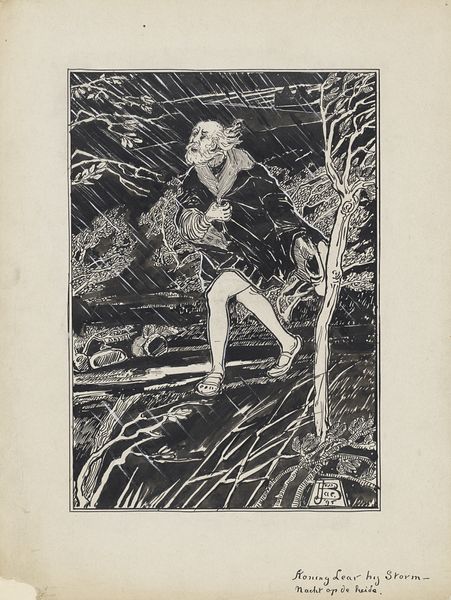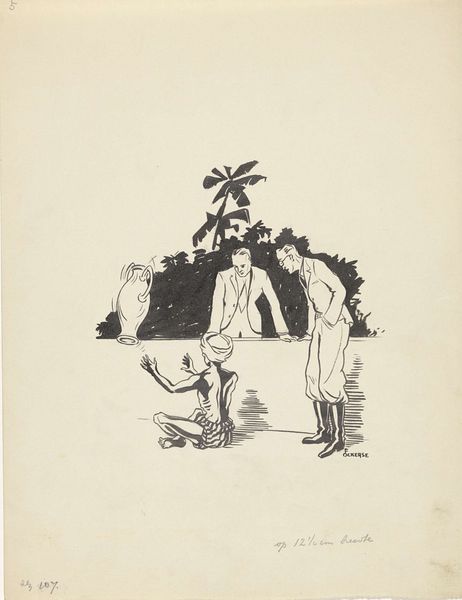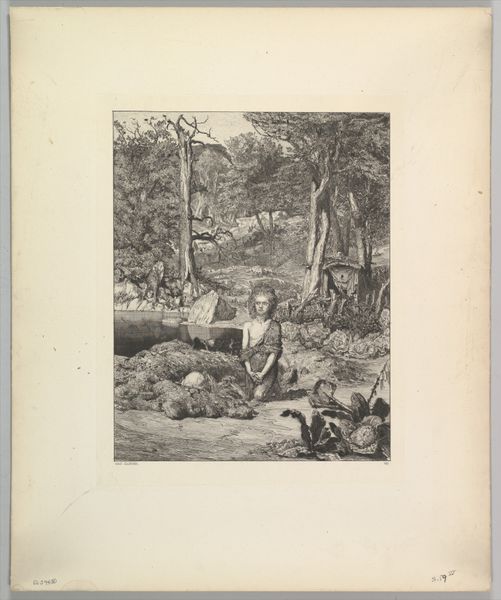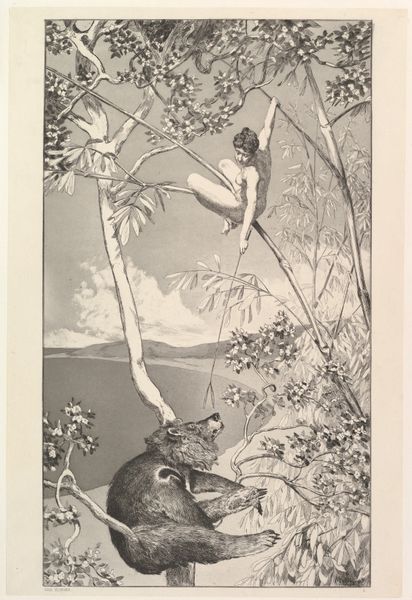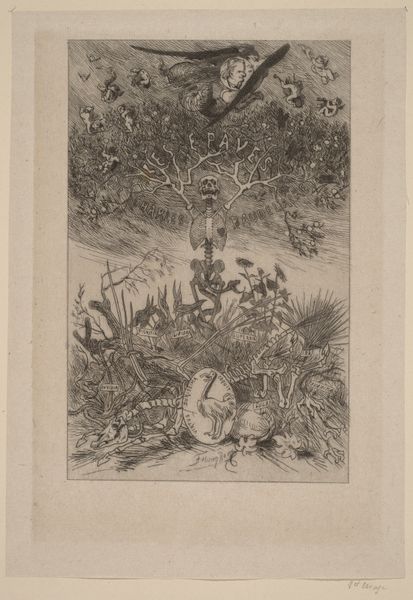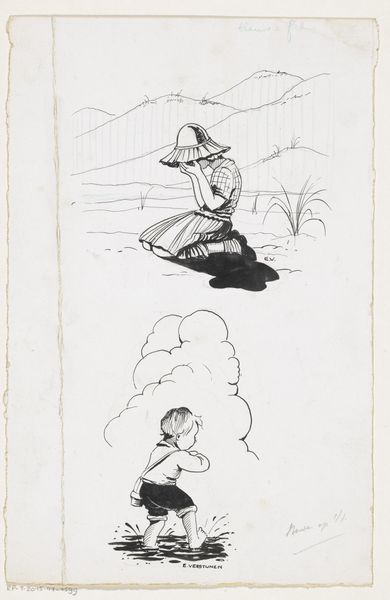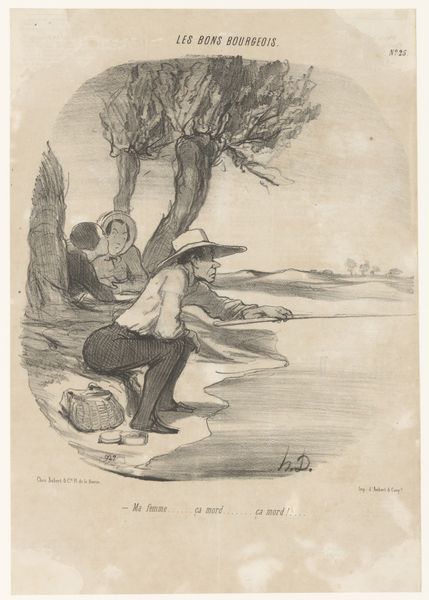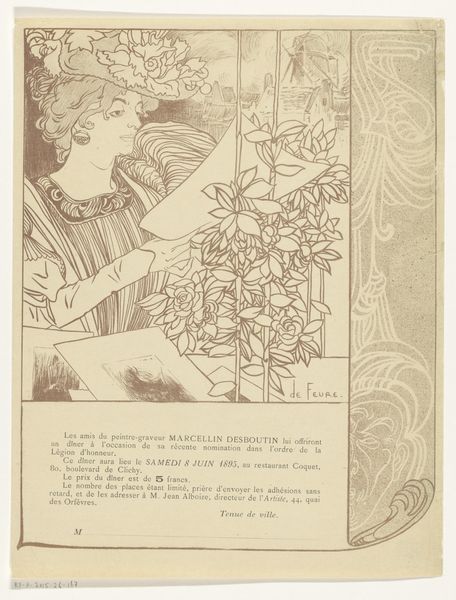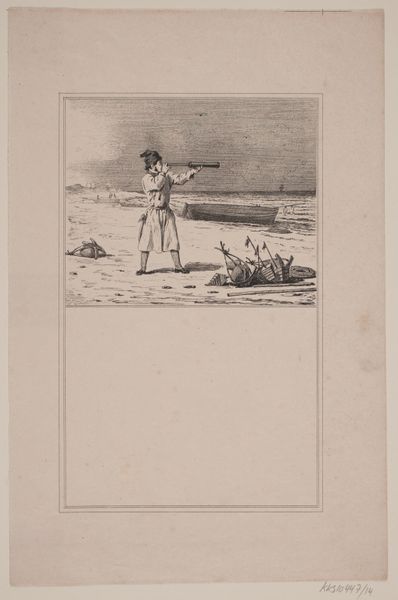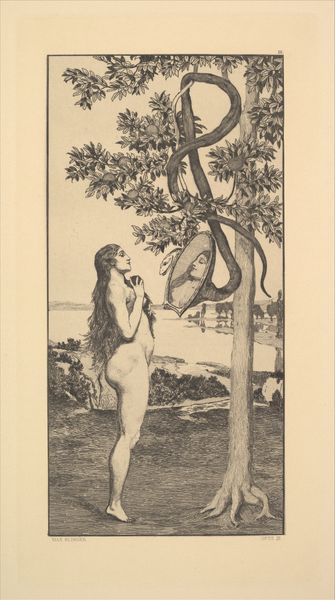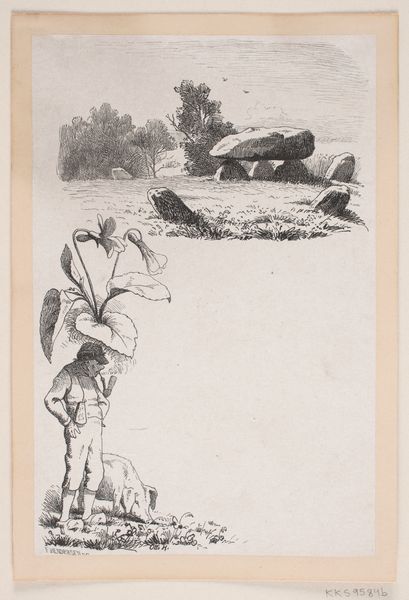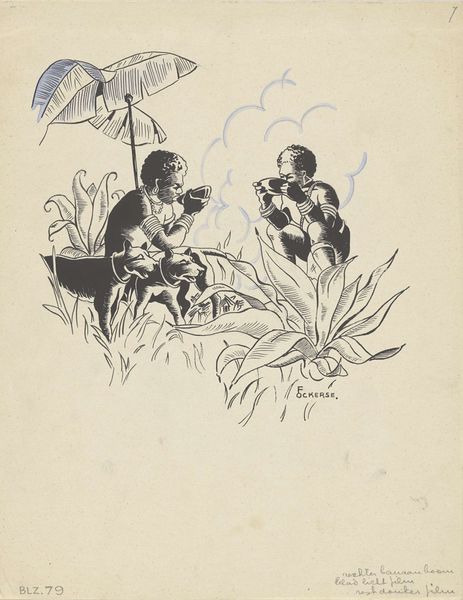
drawing, ink, pen
#
drawing
#
comic strip sketch
#
narrative-art
#
ink
#
folk-art
#
pen-ink sketch
#
comic
#
sketchbook drawing
#
pen
Dimensions: height 337 mm, width 259 mm
Copyright: Rijks Museum: Open Domain
Curator: What an arresting image! There's something so viscerally immediate about this artwork by Hans Borrebach. It’s an ink and pen drawing, possibly created anytime between 1913 and 1970. It's titled *Jongen probeert met een stok over een sloot te springen*, or in English, *Boy Trying to Jump Over a Ditch with a Stick*. Editor: My immediate impression is pure anxiety! That young man is teetering precariously, staff in hand, clearly about to take a leap of faith, and the wide-eyed girl in the background mirrors my own apprehension. Is she meant to portray traditional gender stereotypes? The action versus inaction narrative has multiple implications. Curator: Exactly! Borrebach, through his sketches, taps into those familiar gender roles, embedding them into visual narratives. Here, the brave boy, engaging in an action traditionally perceived as masculine, contrasted with the girl who shows her fear. Considering this, we can understand this drawing as an exploration of traditional masculinity, risk-taking, and the performance of gender in public space. Editor: And what about the setting itself? The stark division of space into foreground, mid-ground, and background reinforces social barriers and limited social opportunities, the rigid rules of what one can and cannot do, with implied condemnation for rule breaking or challenging the dominant social system. Also, let’s not overlook the power dynamic inherent in the narrative. He holds the pole—traditionally a sign of power or authority. Does this amplify any power imbalance reflected through gendered roles and spatial hierarchy? Curator: That’s a salient point. Borrebach's skillful rendering adds depth to the discussion about power and vulnerability, while creating this moment where success and potential failure hangs in the balance. Moreover, folk art, as it relates to the context of children in peril, brings into focus societal safety, protection, as well as neglect. We need to discuss how childhood vulnerability shapes adult gender roles in various socioeconomic classes and locations. Editor: By examining such representations critically, and interrogating embedded societal norms, it reveals much of how patriarchal constructs were communicated to us at a young age, consciously and unconsciously. This, in turn, could prompt action toward re-examination of established gender, racial and class hierarchies, leading to empowerment for many. Curator: Absolutely. These reflections, triggered by this drawing, offer invaluable insights into social dynamics. It has been a pleasure viewing it with you, while recognizing ways forward to empowerment. Editor: Likewise. Every look reveals some new perspective; a tiny story from an event that invites so many conversations, that encourages the public to examine and rethink both self and world, at last, together.
Comments
No comments
Be the first to comment and join the conversation on the ultimate creative platform.
